![物理中的理论概念(第2版) [Theoretical Concepts in Physics]](https://pic.windowsfront.com/11582543/547678d8N48a1ee2b.jpg)

具体描述
内容简介
The inspiration for this book was a course of lectures which I delivered between 1977 and 1980 to undergraduates about to enter their final year in Physics and Theoretical Physics at Cambridge. The aim of the course was to provide a survey of the nature of theoretical reasoning in physics, which would put them in a receptive frame of mind for the very intensive courses of lectures on all aspects of physics in the final year. The objectives of the course are described in the first chapter and concern issues about which I feel very strongly: students can go through an undergraduate course in physics without gaining an understanding of the insights, approaches and techniques which are the tools of the professional physicist, let alone an impression of the intellectual excitement and beauty o the subject. The course was intended as an alternative to the normal mode of presentation and was entitled Theoretical Concepts in Physics.内页插图
目录
Preface and acknowledgements1 Introduction
1.1 An explanation for the reader
1.2 How this book came about
1.3 A warning to the reader
1.4 The nature of physics and theoretical physics
1.5 The influence of our environment
1.6 The plan of the book
1.7 Apologies and words of encouragement
1.8 References
Case Study Ⅰ The origins of Newton's laws of motion and of gravity
1.1 Reference
2 From Ptolemy to Kepler-the Copernican revolution
2.1 Ancient history
2.2 The Copernican revolution
2.3 Tycho Brahe - the lord of Uraniborg
2.4 Johannes Kepler and heavenly harmonies
2.5 References
3 Galileo and the nature of the physical sciences
3.1 Introduction
3.2 Galileo as an experimental physicist
3.3 Galileo's telescopic discoveries
3.4 The trial of Galileo - the heart of the matter
3.5 The trial of Galileo
3.6 Galilean relativity
3.7 Reflections
3.8 References
4 Newton and the law of gravity
4.1 Introduction
4.2 Lincolnshire 1642-61
4.3 Cambridge1661-5
4.4 Lincolnshire 1665-7
4.5 Cambridge 1667-96
4.6 Newton the alchemist
4.7 The interpretation of ancient texts and the scriptures
4.8 London1696-1727
4.9 References
Appendix to Chapter 4: Notes on conic sections and central orbits
A4.1 Equations for conic sections
A4.2 Kepler's laws and planetary motion
A4.3 Rutherford scattering
Case Study Ⅱ Maxwell's equations
5 The origin of Maxwell's equations
5.1 How it allbegan
5.2 Michael Faraday - mathematics without mathematics
5.3 How Maxwell derived the equations for the electromagnetic field
5.4 Heinrich Hertz and the discovery of electromagnetic waves
5.5 Reflections
5.6 References
Appendix to Chapter 5: Useful notes on vector fields
A5.1 The divergence theorem and Stokes' theorem
A5.2 Results related to the divergence theorem
A5.3 Results related to Stokes' theorem
A5.4 Vector fields with special properties
A5.5 Vector operators in various coordinate systems
A5.6 Vector operators and dispersion relations
A5.7 How to relate the different expressions for the magnetic fields produced by currents
6 How to rewrite the history of electromagnetism
6.1 Introduction
6.2 Maxwell's equations as a set of vector equations
6.3 Gauss's theorem in electromagnetism
6.4 Time-independent fields as conservative fields of force
6.5 Boundary conditions in electromagnetism
6.6 Ampere's law
6.7 Faraday's law
6.8 The story so far
……
Case Study Ⅲ Mechanics and dynamics - linear and non-linear
Case Study Ⅳ Thermodynamics and statistical physics
Case Study Ⅴ The origins of the concept of quanta
Case Study Ⅵ Special relativity
Case Study Ⅶ General relativity and cosmology
前言/序言
用户评价
这本《物理中的理论概念(第2版)》给我的第一印象是,它似乎更像是一次智识的旅程,而非枯燥的教科书。我喜欢它那种循序渐进的讲解方式,仿佛一位经验丰富的向导,带着你穿越概念的迷雾,抵达清晰的彼岸。我注意到书中对一些核心概念的解释,并非直接给出定义,而是从历史的视角出发,讲述了这些概念是如何被发现、被修正、被不断完善的。这种方式极大地激发了我对物理学发展脉络的好奇心。我常常会想,那些伟大的物理学家们,在面对未知的世界时,是如何思考的?他们是如何将抽象的数学语言与真实的物理现象联系起来的?这本书能否让我感受到那种“拨开云雾见月明”的顿悟时刻?尤其是在面对一些看似难以理解的现代物理学概念时,例如量子纠缠或者时空弯曲,我希望能通过这本书,找到理解它们的“钥匙”,而不是仅仅被动的接受。对于那些希望深入理解物理学本质的读者来说,这本书的价值不言而喻。
评分刚拿到这本《物理中的理论概念(第2版)》,还没来得及深入研读,但光是翻看目录和前言,就已经让我对接下来的阅读充满了期待。这本书的书名本身就非常有吸引力,它承诺的不仅仅是知识的罗列,而是要带领读者去理解那些支撑起整个物理大厦的“理论概念”。这一点非常重要,因为很多时候,我们学习物理只是机械地记忆公式和解题技巧,却很少去追问这些公式背后究竟蕴含着怎样的思想,又是如何一步步演化形成的。本书的第二版,意味着在第一版的基础上,内容经过了打磨和更新,相信会更加完善和贴合当今物理学的发展。我尤其好奇书中对于不同理论之间联系的探讨,物理学并非孤立的学科,从经典力学到量子力学,再到相对论,这些理论是如何相互关联、相互启发的?是像链条一样环环相扣,还是像树木一样枝繁叶茂,有着共同的根基?这本书能否为我揭示这些“隐藏的脉络”?作为一名对物理有浓厚兴趣的读者,我渴望能通过这本书,构建起一个更系统、更深刻的物理学认知框架,而不仅仅是停留在表面。
评分我一直在寻找一本能够帮助我“建立物理学思维”的书,而《物理中的理论概念(第2版)》似乎正是这样一本。它不直接给出答案,而是引导你去思考,去探索。我非常好奇书中是如何处理一些“反直觉”的物理概念的,比如量子叠加态或者时间膨胀。我们日常的经验往往会成为理解这些概念的障碍,我希望这本书能提供有效的“桥梁”,帮助我跨越这种认知鸿沟。我关注的是它是否能教会我如何像一个物理学家那样去思考问题:如何提出假设,如何设计实验(即使是思想实验),如何分析数据,以及如何解释结果。这本书能否成为我的“思维教练”,帮助我培养出一种更具批判性和分析性的物理学视角?我期待在阅读过程中,能够不断地被书中提出的问题所激发,从而主动地去探索和学习。
评分我对于《物理中的理论概念(第2版)》的预期,更多地在于它能否帮助我“融会贯通”。很多时候,我们在学习物理时,会遇到一个又一个独立的知识点,例如牛顿定律、能量守恒、电磁感应等等。但这些知识点之间究竟有着怎样的内在联系?它们是否都源于某个更根本的原理?本书的书名“理论概念”就暗示了它将致力于解答这些问题。我希望这本书能够帮助我跳出知识点的束缚,去把握物理学的宏观结构和逻辑体系。当我对一个物理现象感到困惑时,我希望这本书能让我联想到相关的理论概念,从而找到解释的方向。它是否能提供一种新的视角,让我能够从不同的角度去审视和理解那些熟悉的物理定律?我期待的是一种“举一反三”的学习体验,而不是简单地记忆和套用。如果这本书能让我真正感受到物理学的“一体性”,那将是我最大的收获。
评分拿到《物理中的理论概念(第2版)》时,我脑海中闪过许多疑问。这本书到底会涉及哪些“理论概念”?它们是涵盖了从经典力学到量子力学、相对论的全部内容,还是会侧重于某个特定的领域?我更关注的是,它是否能够帮助我理解这些理论概念的“灵魂”,即它们背后的思想实验、数学框架以及所解决的物理问题。我希望这本书能让我不再是那个只会解题的“公式人”,而是能真正理解“为什么”这样做,以及“为什么”这个理论是有效的。如果书中能提供一些经典的例证,通过具体的物理情境来阐释抽象的理论概念,那就再好不过了。我甚至期待它能引发我对某些物理学未解之谜的思考,让我感受到物理学仍在不断前进的活力。总而言之,我希望这本书能够成为我通往更深层次物理学理解之路上的重要启迪。
评分好好爱好好好好好好好好好爱好好好好好好好好好爱好好好好好好好好好爱好好好好好好好好好爱好好好好好好好
评分英文版,要是有中文版就更好了。
评分好好爱好好好好好好好好好爱好好好好好好好好好爱好好好好好好好好好爱好好好好好好好好好爱好好好好好好好
评分好好爱好好好好好好好好好爱好好好好好好好好好爱好好好好好好好好好爱好好好好好好好好好爱好好好好好好好
评分英文的,教材中的经典,啃起来可能不容易,但也要费劲去啃
评分刚买到,之前一直缺货。英文影印版,原滋原味。
评分质量说的过,在京东购物放心,物美价廉,推荐。
评分理论物理概论,基本覆盖了四大力学,还有一些更高级的主题。
评分物理中的理论概念(第2版),帮朋友下的单,书已经拿到,反馈不错
相关图书
本站所有内容均为互联网搜索引擎提供的公开搜索信息,本站不存储任何数据与内容,任何内容与数据均与本站无关,如有需要请联系相关搜索引擎包括但不限于百度,google,bing,sogou 等
© 2025 book.coffeedeals.club All Rights Reserved. 静流书站 版权所有





![量子力学 [Quantum Mechanics] pdf epub mobi 电子书 下载](https://pic.windowsfront.com/11632000/5530d43fN532ee4e9.jpg)
![近代化学基础(第三版 下册)/面向21世纪课程教材 [Fundation of Modern Chemistry] pdf epub mobi 电子书 下载](https://pic.windowsfront.com/11633441/57d7b4a1Nab4f6b9a.jpg)
![混合整数GNSS模型参数估计理论与方法 [Theory and Method of Parameter Estimating in Mixed Integer GNSS Model] pdf epub mobi 电子书 下载](https://pic.windowsfront.com/11643818/54dd9cf7N2791ece6.jpg)

![破产概率(第2版) [Ruin Probabilities Second Edition] pdf epub mobi 电子书 下载](https://pic.windowsfront.com/11647755/54e1b517N602c3e9f.jpg)

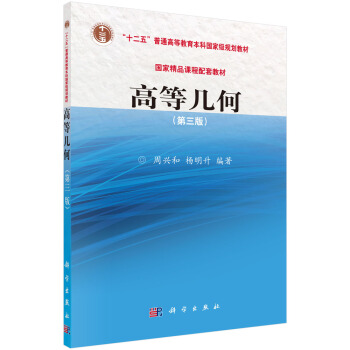
![煤层气储层数值模拟 [Coalbed Methane Reservoir Modeling] pdf epub mobi 电子书 下载](https://pic.windowsfront.com/11663711/550622f4N9146d5ac.jpg)

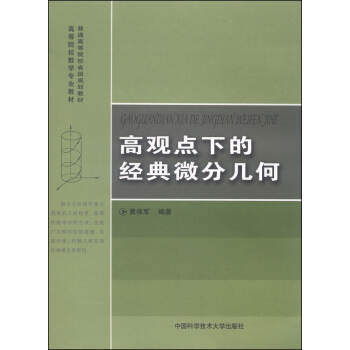
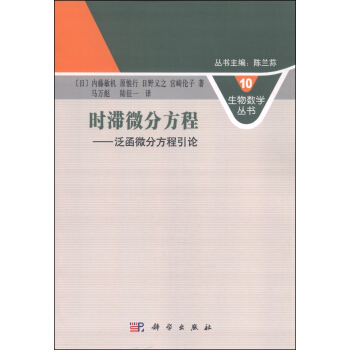
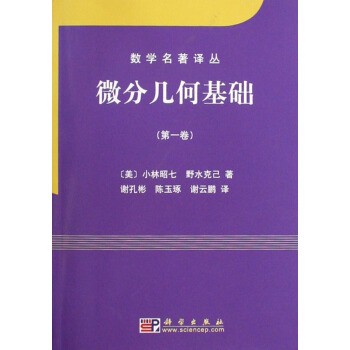
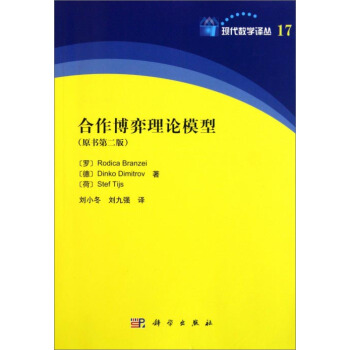
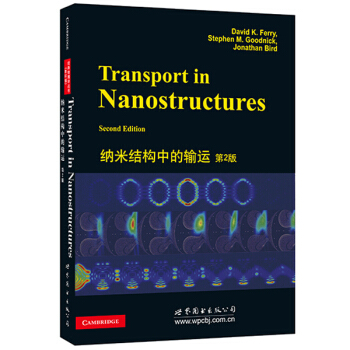
![“数学小子”丛书:贪心的三角形 [3-6岁] pdf epub mobi 电子书 下载](https://pic.windowsfront.com/11696906/557fe2efN6e3440b2.jpg)
